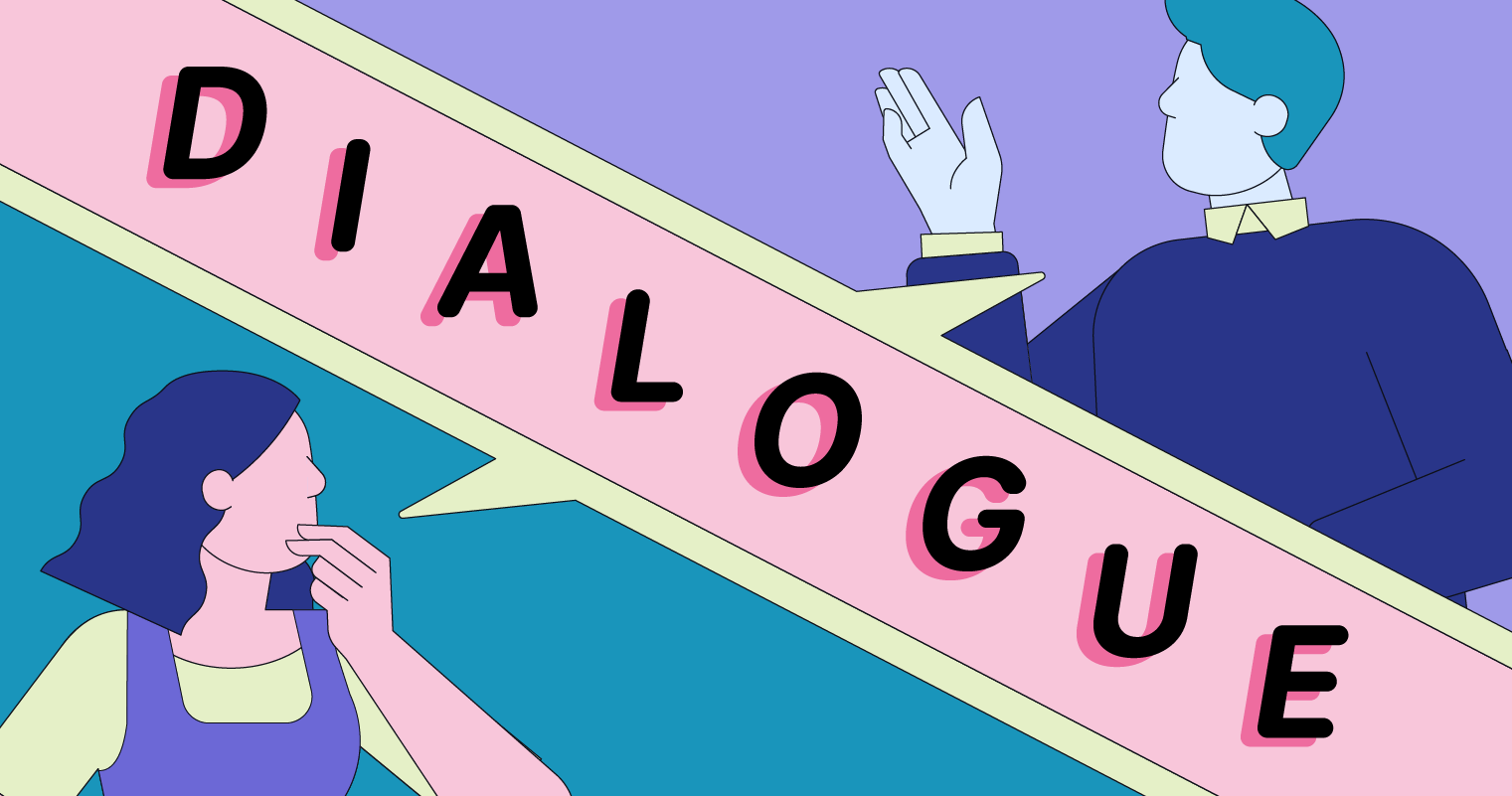Table of Contents
ToggleIntroduction
How To Write Strong Dialogue That Flows Naturally One of the most effective weapons a writer can use is dialogue. It advances the story while revealing characters, advancing the storyline, creating tension, and strengthening bonds between characters. One of the most compelling elements of a novel is dialogue, which feels smooth and natural when done well.
But creating compelling conversation that flows organically is no small task. Making their characters sound real and making sure that dialogue has a function in the plot are challenges for many aspiring authors.
1. Understanding the Role of Dialogue in Your Story
Understanding dialogue’s function within the framework of your story is essential before delving into its mechanics. In a story, dialogue has many purposes beyond simply allowing characters to speak. The following are the main functions of dialogue:
1.1. Character Development
Your characters’ motivations, personalities, and emotional states can all be revealed through dialogue. More about a character can be learned from their speech than from any description, including what they say, how they say it, and what they choose not to say. Readers can learn important details about your characters’ histories, desires, and problems from the way they speak.
1.2. Advancing the Plot
In many cases, dialogue is the driving force behind plot progression. Key events, revelations, and decisions are often communicated through conversation, creating movement in the story. Dialogue allows characters to exchange information, make plans, or argue, which can alter the trajectory of the plot.
Read more
1.3. Building Relationships
Through dialogue, characters form connections and conflicts with one another. Conversations allow for the development of relationships—whether romantic, familial, adversarial, or friendly. How characters speak to one another can express affection, animosity, respect, or disdain, all of which are crucial for establishing the emotional stakes of the story.
1.4. Creating Realism and Immersion
Natural-sounding dialogue makes the world of your story feel more authentic. If characters speak in a way that feels true to life, readers will be able to more easily immerse themselves in your narrative. Authentic dialogue brings the setting and characters to life, making your story more compelling.
2. The Elements of Strong Dialogue
To write dialogue that flows naturally, you must understand its essential components. The following are the fundamental elements that shape effective and engaging conversations:
2.1. Voice
Every character should have a unique voice, one that reflects their personality, background, and motivations. A character’s voice is more than just the words they use—it also encompasses their tone, rhythm, and speech patterns. For instance, a seasoned detective might speak in clipped, direct sentences, while a teenager might use slang or a more casual tone.
How to Create Unique Voices:
- Backstory: A character’s history informs their way of speaking. Consider their upbringing, education, and culture. A well-traveled character might have a broader vocabulary, while someone from a small town might use regional dialects or colloquialisms.
- Personality: Introverted characters might speak less frequently or in short bursts, while extroverted characters might be more verbose and expressive.
- Motivations: A character’s desires and fears will influence their language. Someone trying to hide their intentions might be more evasive, while a character with nothing to hide might be blunt.
2.2. Pacing
Dialogue should mirror the natural flow of conversation, which often involves pauses, interruptions, and rapid exchanges. The pacing of your dialogue should vary depending on the situation. Tense moments or arguments often call for fast-paced, short exchanges, while more reflective scenes might involve slower, more deliberate conversations.
How to Control Pacing:
- Short, Sharp Sentences: Use short dialogue in moments of high tension or urgency. This quickens the pace and adds excitement.
- Pauses and Interruptions: In natural conversations, people often interrupt each other or take brief pauses. Adding these elements can help make your dialogue feel more realistic.
- Longer Exchanges: During moments of reflection or important character development, longer, more thoughtful exchanges are appropriate. Just be sure to balance these with moments of action.
2.3. Subtext
Much of what we say is not what we mean. In real life, people often speak indirectly, avoiding confrontation or masking their true feelings. Good dialogue incorporates subtext—what is unsaid, what characters are hinting at, or what they’re trying to convey without being explicit. This adds depth and intrigue to conversations.
How to Use Subtext:
- Avoid Exposition: Don’t have characters state the obvious or give long-winded explanations about what everyone already knows. Instead, let them hint at things and allow the audience to read between the lines.
- Conflict Through Dialogue: Sometimes, characters say one thing while their body language or tone suggests something else. Use tension in the dialogue to reveal unspoken conflict or emotions.
- Let the Reader Connect the Dots: Instead of spelling everything out, allow the reader to pick up on subtle clues and make inferences about characters’ true intentions.
2.4. Natural Rhythm
Real-life conversations often have a rhythm to them. People don’t always speak in complete, perfect sentences; they stutter, stumble, repeat themselves, and sometimes lose their train of thought. Emulating these natural quirks in your writing can make your dialogue feel more genuine.
How to Achieve Natural Rhythm:
- Fragments and Fillers: Use incomplete sentences or filler words like “uh,” “you know,” “like,” and “well” sparingly to mimic real speech.
- Interruptions and Overlaps: People frequently interrupt each other, especially in moments of conflict or excitement. Use interruptions or overlapping dialogue to create a sense of spontaneity.
- Breaks in Speech: Pauses, hesitation, and repetition can show a character’s emotional state, making the dialogue feel more realistic and grounded.

3. Common Dialogue Mistakes to Avoid
Even experienced writers can fall into traps when crafting dialogue. Here are some common mistakes to watch out for:
3.1. Over-Explaining
One of the biggest pitfalls in dialogue is over-explaining. Characters shouldn’t feel the need to explain everything, especially information that’s already obvious to the other characters or the reader. This can make the conversation feel unnatural and clunky.
How to Avoid Over-Explaining:
- Let the context and subtext carry the weight of the conversation.
- Trust your readers to infer meaning without spelling everything out.
- Only include details that are essential to the plot or character development.
3.2. Using Dialogue as Exposition
While dialogue can be used to convey important information, it shouldn’t be a vehicle for heavy exposition. Having characters speak in long, info-dump-filled monologues feels forced and unrealistic.
How to Avoid Exposition Dumps:
- Break up important exposition with action or emotional reactions.
- Introduce necessary information gradually, allowing it to emerge naturally over time.
- Let characters discuss things that matter to them, rather than everything the reader needs to know.
3.3. Too Much Formality
Unless it’s a specific choice for a character or setting, overusing formal language can make dialogue feel stiff and artificial. People often speak in a relaxed, conversational tone, and characters should reflect that.
How to Avoid Stiff Dialogue:
- Make sure your characters sound like real people. If a character is naturally formal, that’s fine—but not all characters should speak this way.
- Keep in mind the time period and setting. If your story is set in modern-day America, characters shouldn’t sound like they’re speaking in Elizabethan English unless it’s intentional.
3.4. Unnecessary Dialogue Tags
Dialogue tags like “he said” or “she exclaimed” are essential for clarity, but they can become repetitive if overused. Instead, focus on how the character speaks and allow their dialogue to convey the emotion.
How to Avoid Repetition:
- Use “said” as the default dialogue tag—it’s unobtrusive and doesn’t distract the reader.
- Show emotion through action and description instead of relying on tags like “angrily” or “happily.”
- If a character’s tone or gesture is important, convey that in the sentence itself rather than adding a redundant tag.
4. Dialogue Formatting Tips
When writing dialogue, it’s important to follow correct formatting to ensure that readers can easily follow who is speaking and when. Proper formatting includes:
- Quotation Marks: Dialogue should always be enclosed in quotation marks to separate it from the rest of the text.
- New Paragraph for Each Speaker: Every time a new character speaks, start a new paragraph. This makes it easier for readers to follow conversations.
- Correct Punctuation: Place punctuation marks (like commas, periods, and question marks) inside quotation marks, and be sure to capitalize the first word of dialogue unless it’s a continuation of a sentence.
Read more
5. Writing Dialogue that Enhances Your Story
Now that you understand the key components of writing strong dialogue, here are some additional tips to help you use dialogue to its full potential:
- Use Dialogue to Reveal Conflict: Every conversation should reveal something about the relationships or conflicts between characters. Even small talk can expose underlying tensions or desires.
- Let Characters Speak for Themselves: Rather than explaining who your characters are, show it through their dialogue. The way they speak, what they say, and how they say it will provide insight into their nature.
- Keep Dialogue Purposeful: Every line of dialogue should serve a purpose, whether it’s advancing the plot, building character relationships, or revealing important information.
- Vary Dialogue Styles: Not every character should speak the same way. Vary the style of speech based on the character’s personality, education, and social status.
Conclusion
Writing natural-sounding dialogue is a skill that takes practice, but it’s one of the most rewarding aspects of storytelling. By focusing on voice, pacing, subtext, and authenticity, you can create conversations that captivate readers and reveal deeper layers of character and plot. Dialogue isn’t just about words—it’s a powerful tool that shapes your story and brings your characters to life in a way nothing else can. By honing your dialogue-writing skills, you’ll be able to craft conversations that resonate long after the page is turned. Happy writing!
Read more
FAQ
1. How do I make sure my dialogue sounds natural?
To make dialogue sound natural, listen to how people speak in real life. Pay attention to their sentence structure, word choices, and pacing. Emulate these features while making sure your characters’ speech is authentic to their personalities and situations.
2. How can I make dialogue feel more dynamic?
Use subtext, interruptions, and varied pacing. Avoid long, unbroken monologues, and instead, allow characters to speak over one another or leave things unsaid. Use silence and pauses to convey emotion.
3. What if my character doesn’t talk much?
That’s okay! Not all characters are talkative. Sometimes, a character’s silence can be just as telling as their words. Use their actions, body language, and the way others react to them to convey meaning.
4. How do I avoid sounding repetitive in dialogue?
Vary the way your characters speak, and don’t rely too heavily on the same words or phrases. If you find yourself using the same dialogue tag repeatedly (e.g., “he said”), try to incorporate actions or gestures instead.
5. How do I know when to cut a piece of dialogue?
If the dialogue doesn’t serve the plot, reveal something important about the character, or add tension to the scene, consider cutting it. Dialogue that doesn’t move the story forward or reveal new information can often feel redundant.
















